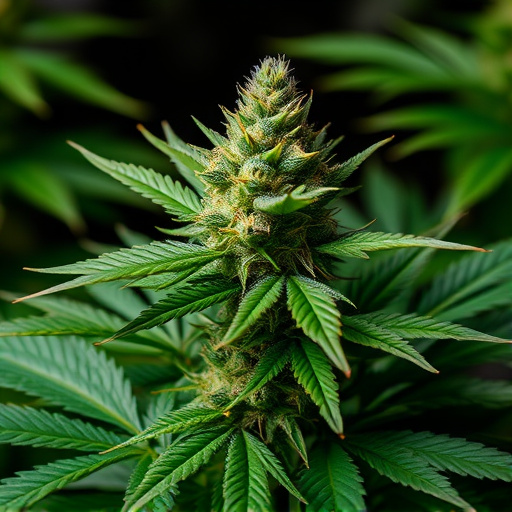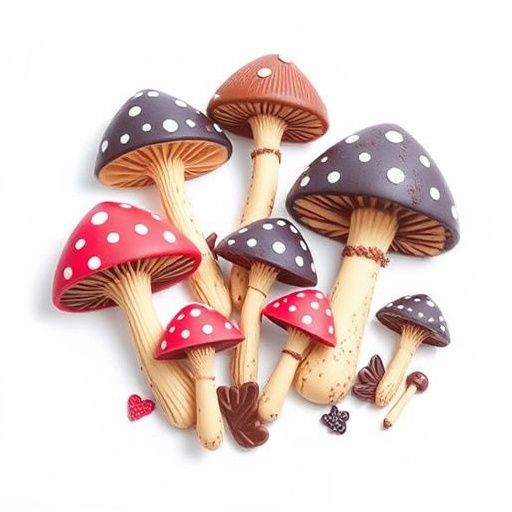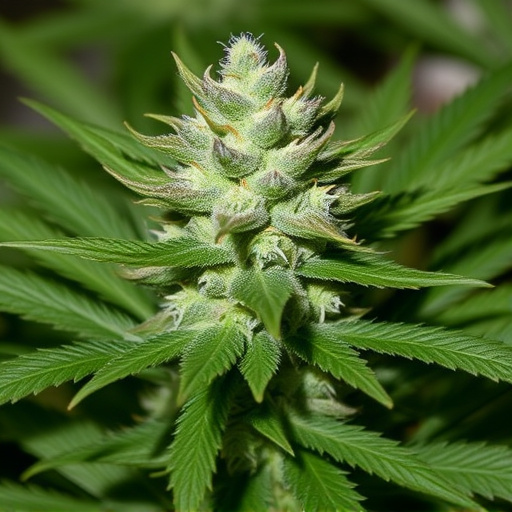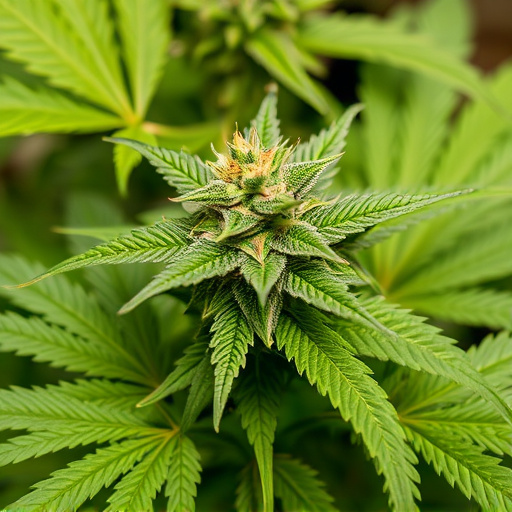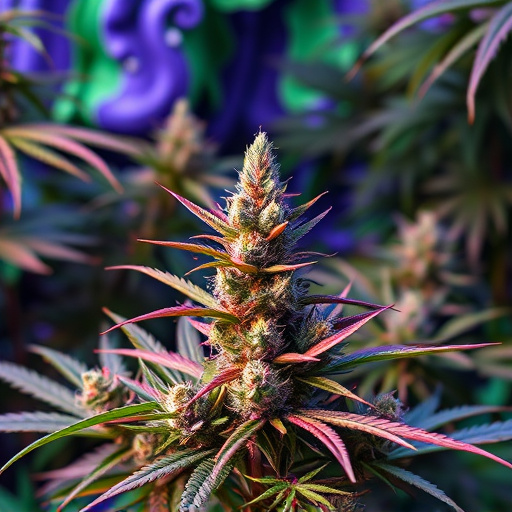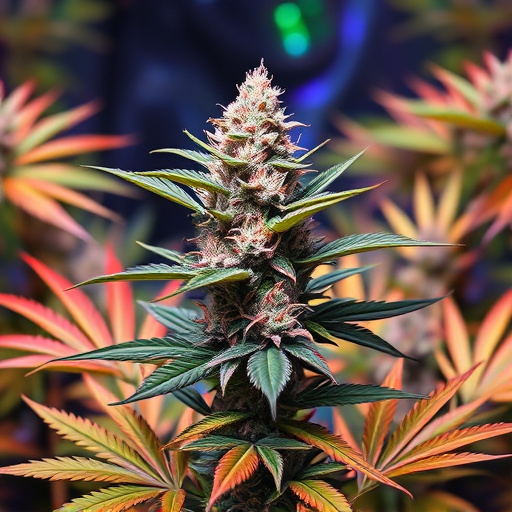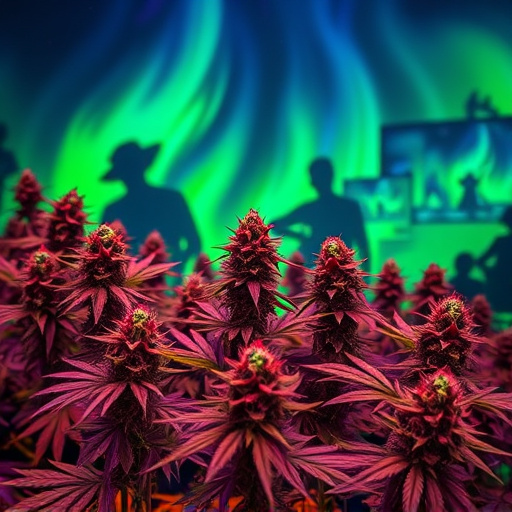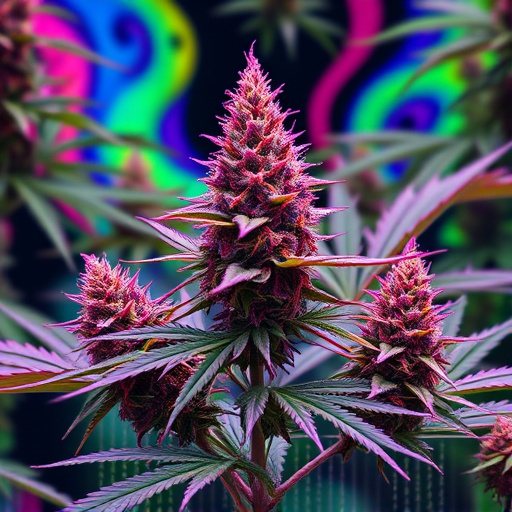Psychedelic cannabis strains, characterized by high THC levels and unique terpene profiles, offer altered states of consciousness similar to classic psychedelics like LSD or mushrooms. These interactions with the endocannabinoid system and neurotransmitters like dopamine and serotonin can lead to intense sensory experiences, heightened creativity, and introspection. However, users should be aware of potential drawbacks such as anxiety, paranoia, and disorientation, especially with higher doses or inexperienced use. Responsible, informed use is crucial for positive therapeutic outcomes, including mental health benefits, pain relief, and stress reduction, while mitigating risks associated with unregulated consumption.
“Unraveling the effects of cannabis flower, particularly its psychedelic strains, offers a fascinating glimpse into the complex interplay between neuroscience and consciousness. This article provides a comprehensive exploration of ‘psychedelic cannabis strains’—a deep dive into their unique composition and profound neurological, psychological, and potential therapeutic impacts.
We’ll navigate the complexities, highlighting both the benefits and risks, to offer an informed perspective on this increasingly studied and debated topic.”
- Understanding Psychedelic Cannabis Strains: A Deep Dive
- The Neurological and Psychological Effects: What to Expect
- Potential Benefits and Risks: Navigating the Complexities
Understanding Psychedelic Cannabis Strains: A Deep Dive
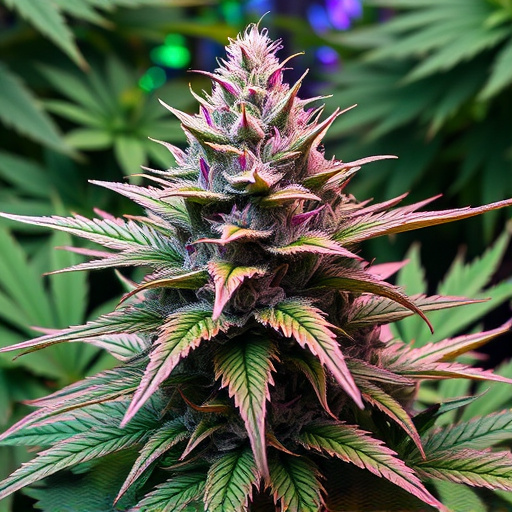
Psychedelic cannabis strains have gained significant attention for their unique effects that go beyond traditional relaxation or medical benefits. These strains are characterized by elevated levels of tetrahydrocannabinol (THC) and often contain distinct terpene profiles, enhancing the intensity of the high. The term ‘psychedelic’ refers to the altered state of consciousness these strains can induce, similar to classic psychedelic drugs like LSD or psilocybin mushrooms. This experience may include heightened sensory perception, vivid imagination, and profound introspection.
A deep dive into psychedelic cannabis reveals a complex interplay between THC and other cannabinoids, such as cannabigerol (CBG), which can modulate the effects. Terpenes, aromatic compounds found in cannabis, also play a crucial role in shaping the user’s experience. Myrcene, for example, is known for its sedative properties, while limonene can induce feelings of euphoria and clarity. Understanding these intricate relationships allows users to navigate and appreciate the diverse range of psychedelic cannabis strains, each offering a unique journey into altered states of consciousness.
The Neurological and Psychological Effects: What to Expect
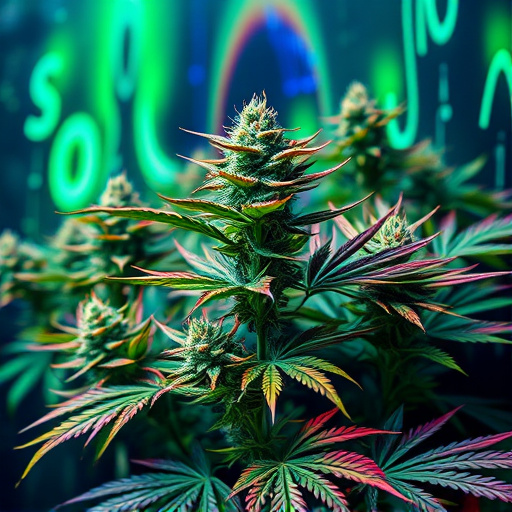
The effects of cannabis flower on the mind and brain are complex, especially with the rise in popularity of psychedelic cannabis strains. These varieties, known for their heightened THC levels, can significantly impact neurological and psychological functions. Users often report intense sensory experiences, heightened creativity, and altered perception—a result of cannabis interacting with the endocannabinoid system and neurotransmitters like dopamine and serotonin.
While some individuals enjoy the cognitive boosts and immersive experiences offered by psychedelic strains, it’s crucial to be aware of potential drawbacks. Anxiety, paranoia, and temporary disorientation are common side effects, especially in those new to cannabis or higher doses. Understanding these neurological and psychological effects is essential for responsible use, ensuring a positive experience, and avoiding adverse reactions.
Potential Benefits and Risks: Navigating the Complexities
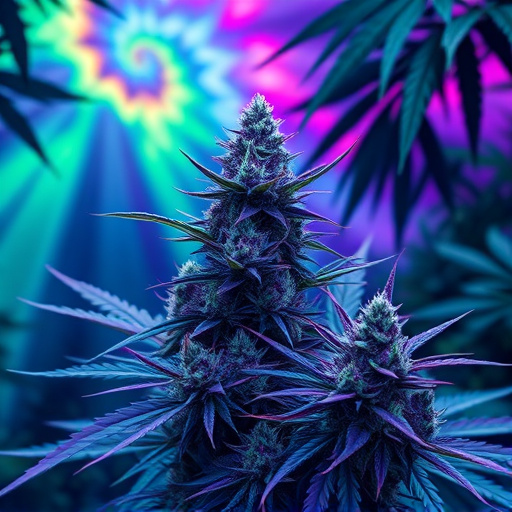
Navigating the complexities of cannabis flower involves recognizing both its potential benefits and risks. Psychedelic cannabis strains, known for their heightened effects, offer promising therapeutic applications in areas like mental health treatment, pain management, and stress relief. Studies suggest that compounds like THC and CBD can help alleviate symptoms associated with conditions such as anxiety, depression, and PTSD. Additionally, psychedelic cannabis has shown potential in enhancing creativity, improving mood, and fostering a deeper connection to consciousness.
However, it’s crucial to acknowledge the risks. Unregulated or excessive use may lead to adverse effects including paranoia, anxiety, and cognitive impairment. Individuals with pre-existing mental health conditions should exercise caution, as cannabis can potentially trigger or exacerbate symptoms. Furthermore, the long-term impacts of regular consumption are still being studied. Therefore, understanding dosage, strain characteristics, and personal tolerance is essential when exploring the complexities of psychedelic cannabis strains.
Psychedelic cannabis strains, with their diverse effects on the mind and body, offer both potential benefits and risks. Understanding these complexities is crucial for navigating the world of psychedelic cannabis. From exploring neurological and psychological impacts to recognizing the benefits for specific conditions, this knowledge equips individuals to make informed decisions. As research continues to unveil the full spectrum of cannabis’s capabilities, it becomes increasingly important to approach its use with awareness and responsible consideration.


